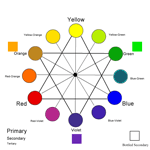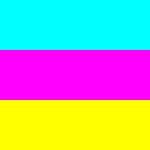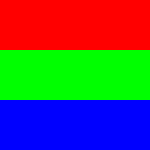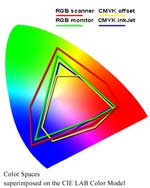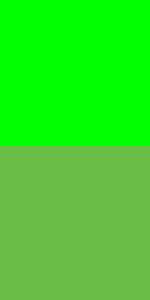Additive Color Systems
Additive color is color created by mixing light of two or more different colors.
Red, green, and blue are the additive primary colors normally used in additive color system.
Subtractive Color Systems
If the source of the light that you see is reflected, transmitted or absorbed by the surface of an object,
the system of color mixing is called subtractive.
The Traditional Pigment Color Model is a Subtractive Color Model
In the traditional pigment color system, the three primaries are Red, Yellow and Blue. And the secondaries are Orange, Green and Violet
The CMY Pigment Color Model and the Process Color Space (CMYK Color Space)
The Process Primaries can be mixed to create a great variety of other colors in addition to the secondaries... and when black ink is available for mixing, an even broader range of colors can be printed.
CMYK Color Space, also known as the "four-color" and printing color space is the CMY color model plus Black. It is also used to describe the printing process itself (as in: "this poster is a four-color print"). CMYK refers to the four inks used in most "full color" printing. Depending upon the source of the explanation, the "K" in CMYK stands for "black", to avoid confusion with blue... or it stands for "key" since in four-color printing cyan, magenta, and yellow printing plates are carefully keyed or aligned with the black plate.
The addition of Black ink
The addition of Black ink to the CMY colors for printing has several benefits:
- Text is typically printed in black and includes fine detail... using three inks without slight blurring would require impractically accurate registration.
- A combination of 100% cyan, magenta, and yellow inks often results in a dark gray color that does not quite appear black. Adding black ink absorbs more light, and yields much darker "blacks."
- A combination of 100% cyan, magenta, and yellow inks soaks the paper with ink, making it slower to dry... this also can cause the ink to bleed.
- Using black ink is less expensive than using the corresponding amounts of colored inks.
Assignment
CMY Pigment color wheel of 6 colors made with ONLY 3 bottled colors of paint… Cyan, Magenta and Yellow
- Paint the 6 colors using ONLY the three primaries (You must mix the secondaries)
- Paint the 6 colors in even steps
- Indicate primaries and secondaries
- Use color patches that are larger than 1 square inch in area
- Neatly cut out the patches of color (at least 1 square inch in area)
- You may be inventive with the shapes of each hue.
- Arrange the colors based on the six-pointed star format
- Glue in place
- Include a sample of the 3 “bottle” secondaries near the mixed secondaries (at least 1 square inch in area)
- Title the color wheel "CMY Pigment Color Wheel"
- Label or provide a key to the Primary, Secondary and bottled secondary colors.
- Label the individual hues.
Craft counts MUCHO!
CMY Color Wheel
|
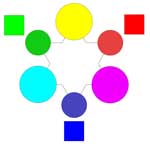 |

